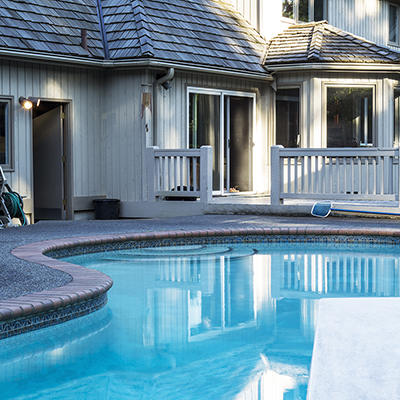How to Lower pH in a Pool

Last updated September 7, 2023
Knowing how to lower pH in a pool keeps it comfortable for swimming. It protects your pool filters, pumps and liners from damage. Water with a high pH level reduces chlorine's effectiveness. This can lead to other problems like cloudy water and algae buildup.
Fortunately, learning how to lower pH in water is a simple task. This guide outlines instructions on how to test and lower pool pH level using pool chemicals. It also describes when to test your pool pH. In addition, you'll learn how to raise the pH if it gets too low. Balance the water’s alkalinity levels for a clear and healthy pool all season long.
Difficulty:
Beginner
Duration:
Over 1 day
Table of Contents
Why Pool pH Matters
What Causes High pH in a Pool?
Pool pH Testing Frequency
How to Test the Pool's pH Level
Treat the Pool to Lower pH Level
Wait and Retest the Pool's pH Level
Why Pool pH Matters
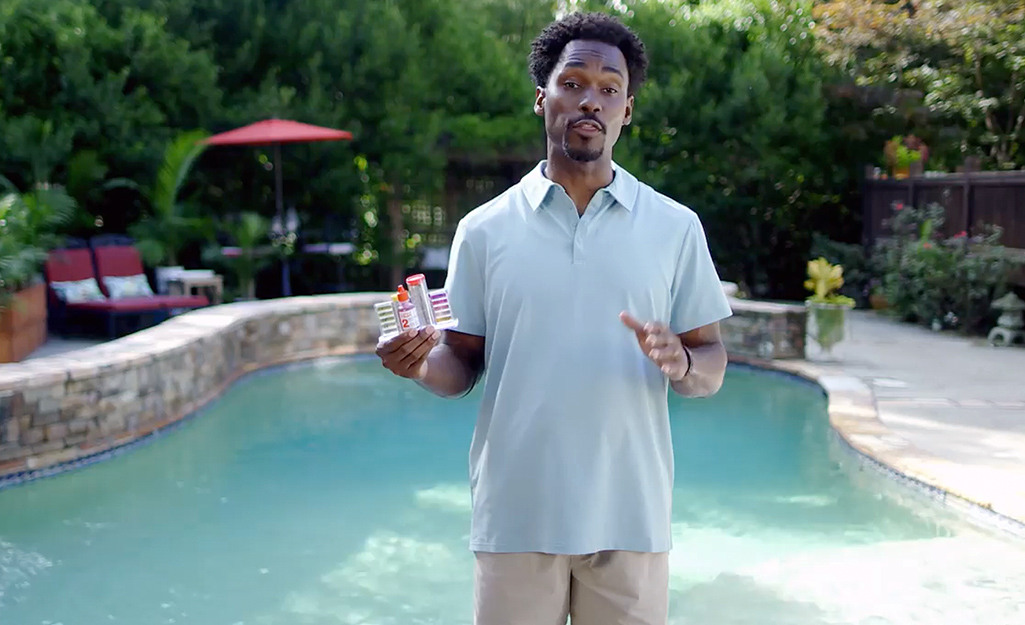
Keep the pH of your pool at the optimum range to make sure that chlorine works most effectively. You’ll enjoy every swim when your pool water is properly balanced. Knowing how to lower pH in water is a necessary DIY skill for pool owners. It’s good to learn how to raise the pH as well.
When your pool pH is too alkaline, meaning the pH is too high, you may see these clues:
- Calcium buildup
- Burning eyes
- Skin gets dry and itchy
- Cloudy water
It’s not pleasant to swim in a pool with a high pH. However, the signs of a high pool pH aren’t too different from those when it’s low. It’s always best to test the pool water before adding chemicals. Don’t guess the pH.
Safety Tip: If your pool’s pH is sky high, regular ways of lowering it may not work. If you need to use strong additives like hydrochloric or sulfuric acid to balance it out, call a professional.
What Causes High pH in a Pool?

When your pool’s pH is too high, you might wonder what caused it. High pool pH is caused by a wide variety of issues. Here are common causes of an alkaline pool:
- Algae can raise the pH.
- Adding strong liquid chlorine, calcium or lithium hypochlorite chlorine may raise it.
- Suddenly heating the water, whether from a pool heater or a string of sunny days, could up the pH.
- Saltwater pools tend to be alkaline.
- Adding water from the hose may raise it, depending on the content of your tap water.
- For a new pool, pebble or plaster finishes raise the pH. Fiberglass and vinyl won’t see this initial pH spike.
- Time raises the pH in chlorinated pools. This happens naturally.
Pool pH Testing Frequency
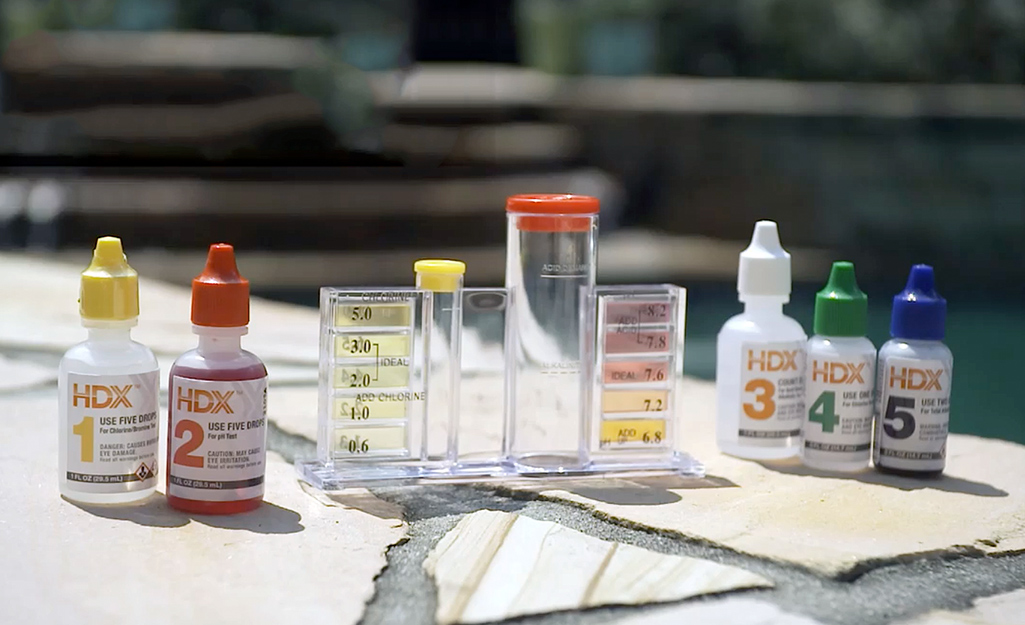
It’s good to get into the habit of frequently testing your pool pH. That way, if it’s a little high or low, it’s a quick and easy fix. When the pH gets extremely acidic or alkaline, it’s tougher to correct. It also takes longer to adjust it.
Follow these guidelines for testing the pool pH level:
- In general, test your pool water at least twice a week. You’re likely testing the chlorine that often, so just add pH testing to your routine.
- When you’re swimming daily, test daily too.
- Test the pH after a pool party. If the water level changed from all the splashing, your chemical balance may be off.
- Do a pH test after heavy rains or storms. Rainfall and plant debris can change the pH.
How to Test the Pool's pH Level

Knowing how to lower pH in a pool means you’ll need pool test kits and strips. There are three main types of pool pH testers: liquid, test strip and digital. Dissolvable tablets fall into the liquid category. Some testers even have apps that connect to your smartphone.
When you’re ready to test your pool water, keep these tips in mind:
- Test your water's pH and total alkalinity.
- The pH level should be between 7.2 and 7.6. A pH of 7.4 is perfect for pool water.
- The total alkalinity should be between 80 ppm and 150 ppm.
- If the levels are too high, you will need to lower your water's pH.
- A high pH level means your water is too alkaline. You need to use a mild acid to balance it out.
Make sure your water sample is from the center of pool, at least 1.5 feet deep. Avoid the skimmer and pool jets. The moving water will distort your sample. Just reach in to scoop out the sample — no need to climb into the pool.
Sometimes, pH testing may be inaccurate. You may not get a good read in these situations:
- Residual chlorine levels are above 3.
- You added bromine to your pool water.
- Your water sample was pulled from near the jets or skimmer.
Treat the Pool to Lower pH Level
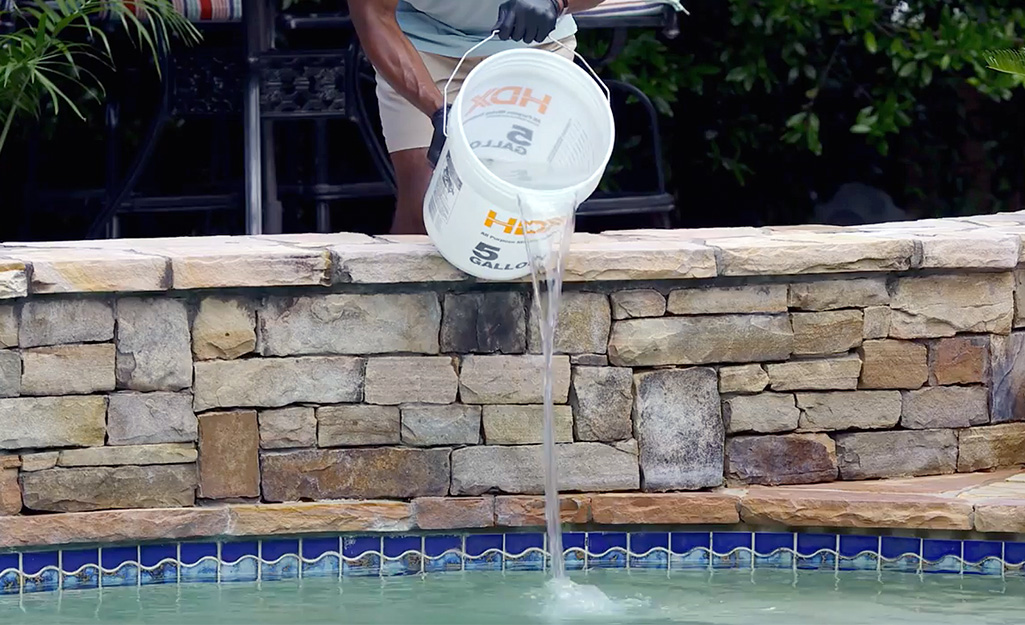
Remember, always wear protective clothing when using pool balancers to re-balance the water. This includes goggles or safety glasses and rubber gloves.
When you’ve determined that your pool pH is too high, there are two ways you can balance it: dry acid or muriatic acid.
If you’re using a dry acid, use these steps:
- Follow the manufacturer’s instructions on the package. Use the recommended amount only.
- Read carefully to see if you need to pre-dissolve the product to avoid surface discoloration.
- You may be able to just add the dry acid. Do whatever the label says.
- Make sure the pool pump and filter are running.
- Spread the product in the deepest part of your pool.
- Use a pool brush to break up any clumps. This will also help disperse the dry acid evenly.
If using you’re using pool balancers with muriatic acid, use these steps:
- Read the package and follow the manufacturer’s instructions.
- In some cases, you may need to mix and dilute the product. If not, add the balancer directly to the pool as directed.
- Slowly pour the product into your pool. Take care to avoid spills and splashes.
- Run the pool filter and pump unless the instructions say otherwise.
- Apply the pH balancing chemicals as detailed on the label.
Wait and Retest the Pool's pH Level
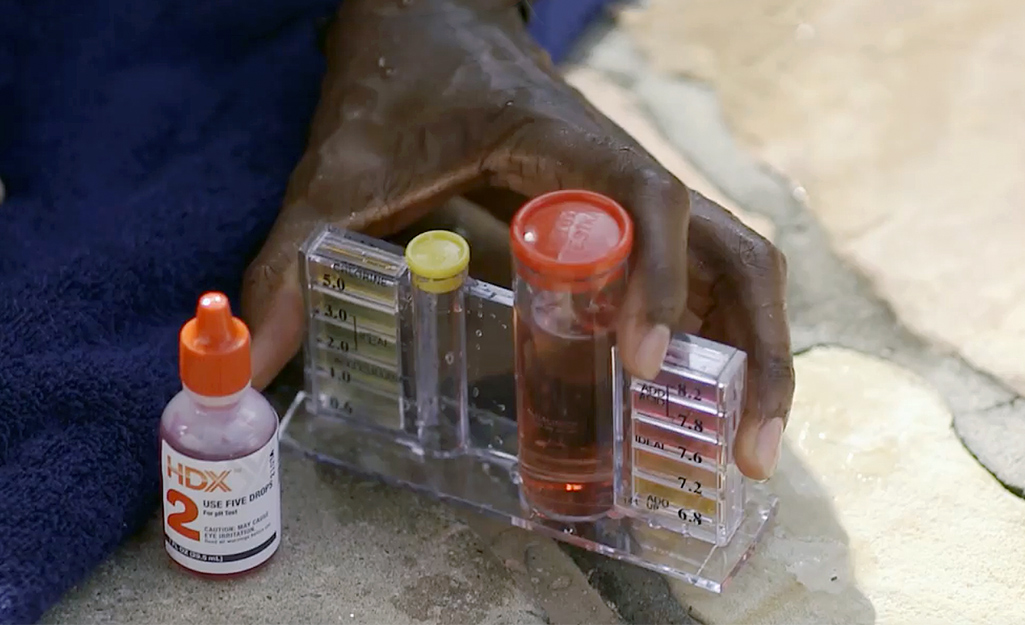
Pool chemicals take some time to balance the pH. Let the pool water circulate for at least two hours.
- After the chemicals have cycled through for a couple of hours, test the pH again.
- Add more product if needed. If your pH is still high, follow the same steps as before.
- If your pool pH is now too low, read on to learn how to raise the pH of your pool.
Wait until your pool water has a pH between 7.2 and 7.6. Once the water is properly balanced, you’re cleared to go back in the pool. Ideal pool pH helps the chlorine work as it should. That way, you can stay safe and healthy as you swim.
How to Raise Pool pH Level

Sometimes the pH level goes lower than needed. If you were learning how to lower the pH level of your pool and it accidentally went too low, it’s time to bring it back into balance.
As for what causes low pH in a pool, that varies:
- Leaves and pine needles may give you a lower pH reading. This includes the leaves on the pool cover.
- A heavy rainfall, especially in a city, can lower the pH. Rain is slightly acidic and will lower the alkalinity.
- Many people lounged in the water. Body oils and sweat may mean a low pH for your pool.
- You used dry or muriatic acid to lower pH. It may have been too much or there could’ve been other factors at play. Sometimes it’s a challenge to get the pH just right.
Although a low pool pH is uncommon, you can still balance it out. The pool water is too acidic now. That means you balance it with alkaline substances. Raise pool pH with borax, soda ash or aerate the water. Washing soda and sodium carbonate are other names for soda ash.
To use soda ash to raise pool pH, follow these steps:
- Follow the directions on the package to learn how much washing soda to use.
- Run the pool pump and filter.
- Sprinkle the washing soda evenly across the whole pool.
- Wait an hour for the soda ash to distribute throughout the water.
- Test the water and proceed accordingly.
Follow these steps to raise pool pH with boric acid:
- Read the package for the manufacturer’s instructions.
- Stick to what the label recommends. Use a water-calculator if you need to figure out how much to add per gallon.
- An example might be 5 ounces of boric acid per 1,250 gallons of water.
- Run the pool filter and the pump unless the instructions say not to.
- Add boric acid to the skimmer.
- Wait for it to circulate throughout the water.
- Retest after a full day. If the pool pH is balanced, you can swim again.
Lastly, you can aerate the pool, or get more air in the water to raise pH. If you have any fountains or jets, turn them on. You want water hitting the air and then returning into your pool. This method takes longer to balance the pH than adding alkaline materials to the water.
Now that you’ve learned how to lower pH in a pool, you can swim comfortably in balanced pool water. Keeping your pool at the proper pH is worth the upkeep.
Ready to jump into pool maintenance? Get online orders of pool vacuums, brushes and other supplies delivered right to your door.



